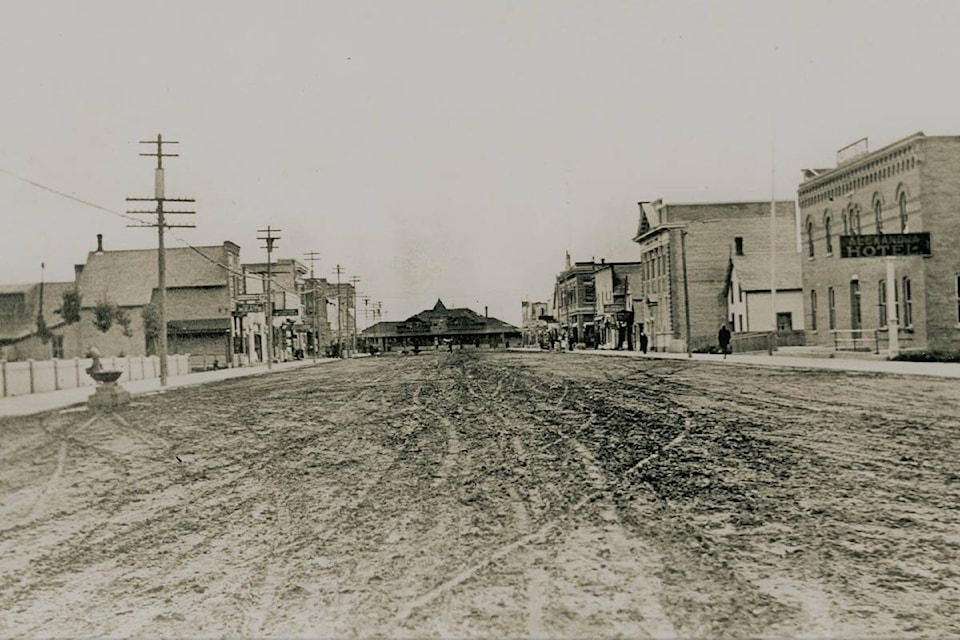The First World War was a searing experience for Red Deer and central Alberta.
More than 850 young men of Red Deer and district had gone to serve “King and Country.”
Of those, 118 had lost their lives. Many of those who returned had suffered wounds to their bodies and their minds and/or were suffering from significant illness.
As the war drew to a close at the end of 1918, the great Spanish flu epidemic struck. By the time this epidemic ebbed, 54 people had lost their lives to it.
In other words, half as many died in a few weeks from the flu as had lost their lives in the four years of the war.
The younger generation, who had felt such hope and optimism in the great settlement boom prior to the war, was devastated. The misery continued in the post-war period.
The worst inflation ever recorded in Canadian history struck, fuelled by the massive spending during the war.
Once the inflation bubble burst, the economy plunged into a very deep depression. A great many businesses went bankrupt, or else quietly closed their doors. Local unemployment soared to almost 25 per cent.
Local farmers struggled, not only because of the poor economy, but also because of poor harvests. Winter came early and stayed late. Temperatures plunged to some of the lowest levels recorded since the brutal winter of 1906-07.
The poor weather deepened the feelings of misery and hardship.
People could not turn to the government for relief. Governments at all levels struggled with enormous debts incurred during the war and the sharp reductions in tax revenue with the collapsing economy.
The main sources of support were family and friends, and the Patriotic Fund, a national charity created to provide assistance to veterans and their families.
Another major source of support and assistance was the Great War Veterans Association (forerunner of the Royal Canadian Legion).
It was an organization of veterans helping comrades and their families.
The Red Deer branch was created even before the war was over (i.e., in spring 1917).
With the hard economic times, the veterans association actively undertook a number of fundraising initiatives to support its activities and programs.
One project was the creation of a Great War Veterans Orchestra. This provided a means of raising funds. It also had the major benefit of providing veterans, many of whom were struggling, with a way of earning some welcome income.
As Nov. 11, the first anniversary of the end of the First World War, approached, the veterans association decided to hold a masquerade ball at the Red Deer Armouries, the largest hall in the city. The event would be a fundraising event, but also a way of celebrating the return of peace, as well as providing a social evening for veterans and their spouses.
Moreover, the veterans association had helped to initiate a drive to raise funds for a suitable memorial to all those who had served, and particularly all those who had lost their lives, in the Great War.
Therefore, some of the proceeds from the Armistice Day Ball would be dedicated to that project.
The Village of Penhold had already commenced the construction of a community memorial hall, under the leadership of the local Women’s Institute. The hall officially opened with a Thanksgiving supper and military ball Oct. 31, 1919 (Halloween night).
The Red Deer veterans association orchestra provided the evening’s musical entertainment.
The Armistice Day Masquerade Ball in Red Deer was also a great success. One of the largest crowds in recent memory turned out. The hall was decorated in accordance with two themes: peace and Armistice night.
The masquerade ball was not the only local remembrance of the armistice anniversary. On the morning of Nov. 11, the federal government decreed a national two minutes of silence at 11 a.m., the exact time the official armistice came into effect in 1918.
Consequently, the electricity in Red Deer was shut down for two minutes.
On the preceding Sunday (Nov. 9), most churches held special memorial services.
Nov. 16, there was a special memorial service at St. Luke’s Anglican Church with Maj. Barrow, chief chaplain of Military District 13, presiding.
The service closed with bugler W. Cookson playing the Last Post on the steps of the chancel.
Red Deer historian Michael Dawe’s column appears Wednesdays.
